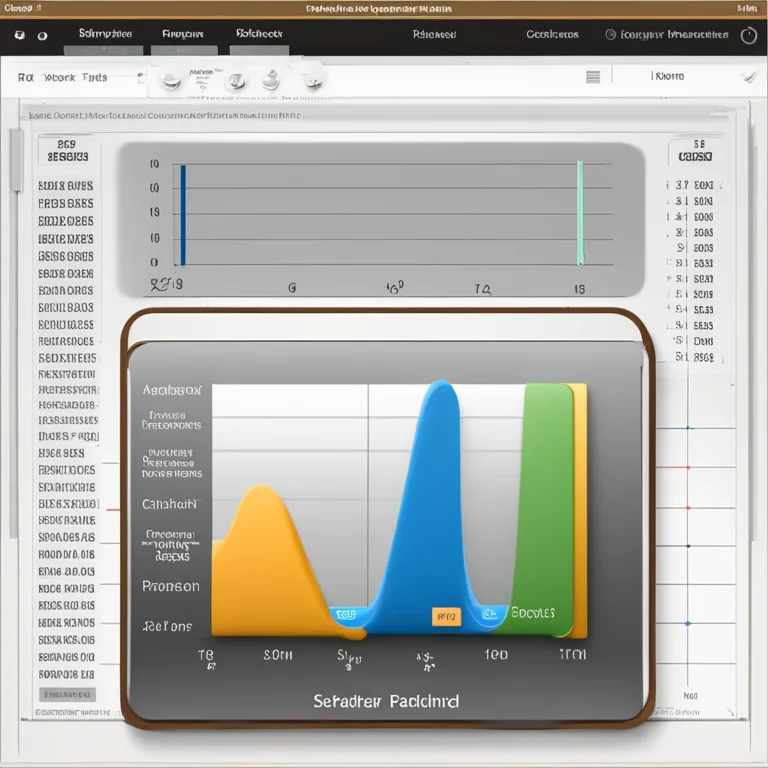
The Rhythms Within: Understanding Biorhythm Cycles
Delve into the intricacies of biorhythm cycles and their influence on physical, emotional, and intellectual aspects of our lives.
article by Adrian Wallace
An Introduction to Biorhythm Cycles
Despite being outside the mainstream of scientific research, biorhythm theory continues to intrigue individuals with its captivating proposition: the idea that human life is influenced by rhythmic biological cycles. Originating from the 19th century, the theory posits that from the moment of birth, people are governed by these cycles, which impact various areas of our well-being. As we journey into the 21st century, the nuances of biorhythm cycles have been woven into the fabric of personal wellness and self-awareness. With advancements in technology, people increasingly monitor their cycles with the aim of enhancing life quality and making informed decisions.

The Three Primary Biorhythm Cycles
Biorhythms are typically categorized into three primary cycles: Physical (23 days), Emotional (28 days), and Intellectual (33 days). Each cycle is said to influence specific aspects of human function. The Physical cycle regulates strength, endurance, and health, while the Emotional cycle is linked to mood, creativity, and sensitivity. The Intellectual cycle supposedly governs analytical thinking, learning ability, and logic. Followers of biorhythm theory strive to track these cycles, using them to anticipate periods of high performance or potential low points.

Modern Tools for Tracking Biorhythms
In this digital age, biorhythm tracking has evolved with the creation of sophisticated apps and software, allowing for personalized biorhythm calculations. These technologies typically require only a birth date to generate a biorhythm chart, which can be updated daily to provide insights. With improved algorithms and user-friendly interfaces, such tools are making the concept of biorhythms more accessible and allowing more individuals to investigate the potential correlations between these cycles and their daily lives.

Interpreting Highs, Lows, and Critical Days
Biorhythm charts usually display three lines representing the aforementioned cycles, each undulating between high and low points. Days when a cycle crosses the zero line are considered "critical" or transition days, where individuals might experience instability or unpredictability in the associated field. Advocates of biorhythm theory suggest exercising caution on critical days and leveraging the high points of cycles for important activities or decisions that align with the cycle's traits.

Skepticism and Scientific Scrutiny
Despite its popularity in certain circles, it's important to acknowledge the skepticism surrounding biorhythm theory from the scientific community. Many studies have attempted to validate the concept but failed to find empirical support for the correlation between these cycles and life events. As such, while biorhythm charts can serve as a curious self-reflective tool, it's crucial for individuals to critically evaluate the role of biorhythms in their lives without forgoing reason or evidence-based practices.
Biorhythms as a Complementary Practice
For those open to holistic well-being practices, biorhythms may serve as an intriguing complement to other modalities such as astrology, meditation, and mindfulness. It poses an invitation to deepen one's self-understanding and to cultivate a more nuanced appreciation for the body's natural rhythms. While it's vital to ground one's health decisions in science, exploring biorhythms can be part of a broader tapestry of personal growth and exploration.
Published: 1/4/2024
Modified: 1/4/2024
More predictions
Come back here soon to learn more about yourself and your future


The Rhythms of Life: Understanding Biological Cycles
Delve into the fascinating world of biological rhythms and discover how they shape our lives, influence our health, and intertwine with nature's ebb and flow.


Calculating Biorhythms: A Step-by-Step Guide
Learn the process behind biorhythm calculations to understand your physical, emotional, and intellectual cycles for well-being.


The Rhythms of the Natal Moon: An Insight into Emotional Tides
Discover how the natal moon's biorhythms influence your emotional ebbs and flows, and how tuning in can enhance your well-being and personal understanding.